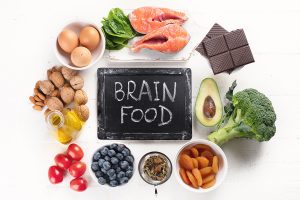 All diseases share two common causes: inflammation and oxidative stress. Yet both are normal processes of the body that sustain life. Therefore, we can’t take a pill to “cure” inflammation or eliminate oxidative stress. We need both. But they often get out of control.
All diseases share two common causes: inflammation and oxidative stress. Yet both are normal processes of the body that sustain life. Therefore, we can’t take a pill to “cure” inflammation or eliminate oxidative stress. We need both. But they often get out of control.
When inflammation and oxidative stress—chemical processes designed to fight illness and provide energy—go awry, they cause many of the chronic diseases of aging including gastrointestinal disorders, heart disease, cancers, and brain disorders such as memory loss, Parkinson’s, multiple sclerosis, and Alzheimer’s Disease.
Active seniors who want to live longer disease-free have a tremendous opportunity to prevent degenerative diseases long before they manifest. But we must act now, decades before symptoms might develop. Sooner rather than later.
Anti-Inflammatory Recipe
This means taking a pro-active stance against inflammation and oxidative stress even before any signs appear. In other words, engage in curative measures even if you don’t have any reason to suspect you’re getting one of these devastating illnesses.
- Lower your carbohydrate and sugar intake.
- Only use omega-3 rich olive oil, avoid inflammatory omega-6 oils such as refined vegetable oils.
- Eat 7-9 portions of fruits and vegetables daily.
- Get adequate exercise daily (30-45 minutes).
- Get quality sleep (7-8 hours).
- Take needed supplements like omega-3 fish oil, vitamin D3, antioxidant vitamins A, C, and E.
- Quality protein from grass-fed, free-range, non-industrialized sources, and wild-caught fish.
- Limit alcohol.
- Manage stress levels.
- Connect with others.
Oxidative Stress and Our Defenses
To better understand oxidative stress and free radicals, I turned to an article written by Dr. Andrew Weil.
“Oxidation” is the chemist’s term for the process of removing electrons from an atom or molecule. The result of this change can be destructive – rusting iron is a familiar result of oxidation. Here, oxygen is the responsible agent, but other oxidizing agents, such as chlorine, can be as harsh.
Although we need oxygen to live, high concentrations of it are actually corrosive and toxic. We obtain energy by burning fuel with oxygen – that is, by combining digested food with oxygen from the air we breathe. This is a controlled metabolic process that, unfortunately, also generates dangerous byproducts. These include free radicals – electronically unstable atoms or molecules capable of stripping electrons from any other molecules they meet in an effort to achieve stability. In their wake they create even more unstable molecules that then attack their neighbors in domino-like chain reactions.
By the time a free radical chain fizzles out, it may have ripped through vital components of cells like a tornado, causing extensive damage, similar to that caused by ionizing radiation.
So we can’t avoid oxidative stress or free radicals, they are part of the normal metabolism that makes energy from the food we eat. But we can eat a diet rich in antioxidant materials, especially vitamins A, C, and E.
Defense against Free Radicals
Oxidative stress is the total burden placed on organisms by the constant production of free radicals in the normal course of metabolism plus whatever other pressures the environment brings to bear (natural and artificial radiation, toxins in air, food and water; and miscellaneous sources of oxidizing activity, such as tobacco smoke).
Our bodies aren’t helpless in the face of these assaults. We have defenses against oxidative stress in the form of physical barriers to contain free radicals at their sites of production within cells. Here are other ways the body handles free radicals:
- Enzymes that neutralize dangerously reactive forms of oxygen.
- Substances in our diets (such as vitamin C and vitamin E) that can “quench” free radicals by donating electrons to them and cutting off the chain reactions early in their course.
- Repair mechanisms to take care of oxidative damage to DNA, proteins and membranes.
- Complex stress responses that include programmed cell suicide if damage is too great.
A good case can be made for the notion that health depends on a balance between oxidative stress and antioxidant defenses. Aging and age-related diseases reflect the inability of our antioxidant defenses to cope with oxidative stress over time. The good news is that with strong antioxidant defenses, long life without disease should be possible.
Dr. Weil is right. But I would add that not only is long life possible, but it is highly probable. I’m aiming for a long live disease-free. So far, so good.

Recent Comments